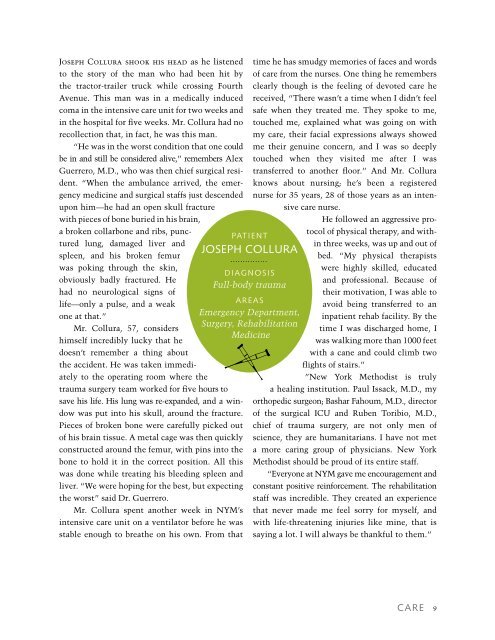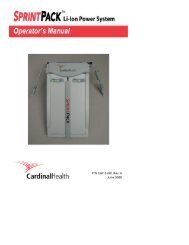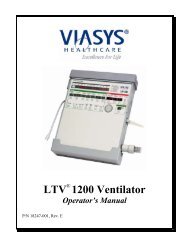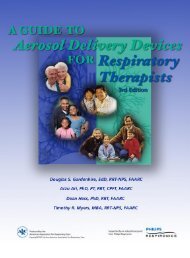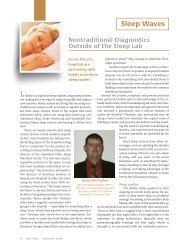this article - AARC.org
this article - AARC.org
this article - AARC.org
- No tags were found...
Create successful ePaper yourself
Turn your PDF publications into a flip-book with our unique Google optimized e-Paper software.
Joseph Collura shook his head as he listenedto the story of the man who had been hit bythe tractor-trailer truck while crossing FourthAvenue. This man was in a medically inducedcoma in the intensive care unit for two weeks andin the hospital for five weeks. Mr. Collura had norecollection that, in fact, he was <strong>this</strong> man.“He was in the worst condition that one couldbe in and still be considered alive,” remembers AlexGuerrero, M.D., who was then chief surgical resident.“When the ambulance arrived, the emergencymedicine and surgical staffs just descendedupon him—he had an open skull fracturewith pieces of bone buried in his brain,a broken collarbone and ribs, puncturedlung, damaged liver andspleen, and his broken femurwas poking through the skin,obviously badly fractured. Hehad no neurological signs oflife—only a pulse, and a weakone at that.”Mr. Collura, 57, considershimself incredibly lucky that hedoesn’t remember a thing aboutthe accident. He was taken immediatelyto the operating room where thetrauma surgery team worked for five hours tosave his life. His lung was re-expanded, and a windowwas put into his skull, around the fracture.Pieces of broken bone were carefully picked outof his brain tissue. A metal cage was then quicklyconstructed around the femur, with pins into thebone to hold it in the correct position. All <strong>this</strong>was done while treating his bleeding spleen andliver. “We were hoping for the best, but expectingthe worst” said Dr. Guerrero.Mr. Collura spent another week in NYM’sintensive care unit on a ventilator before he wasstable enough to breathe on his own. From thatpatientjoseph colluradiagnosisFull-body traumaareaSEmergency Department,Surgery, RehabilitationMedicinetime he has smudgy memories of faces and wordsof care from the nurses. One thing he remembersclearly though is the feeling of devoted care hereceived, “There wasn’t a time when I didn’t feelsafe when they treated me. They spoke to me,touched me, explained what was going on withmy care, their facial expressions always showedme their genuine concern, and I was so deeplytouched when they visited me after I wastransferred to another floor.” And Mr. Colluraknows about nursing; he’s been a registerednurse for 35 years, 28 of those years as an intensivecare nurse.He followed an aggressive protocolof physical therapy, and withinthree weeks, was up and out ofbed. “My physical therapistswere highly skilled, educatedand professional. Because oftheir motivation, I was able toavoid being transferred to aninpatient rehab facility. By thetime I was discharged home, Iwas walking more than 1000 feetwith a cane and could climb twoflights of stairs.””New York Methodist is trulya healing institution. Paul Issack, M.D., myorthopedic surgeon; Bashar Fahoum, M.D., directorof the surgical ICU and Ruben Toribio, M.D.,chief of trauma surgery, are not only men ofscience, they are humanitarians. I have not meta more caring group of physicians. New YorkMethodist should be proud of its entire staff.“Everyone at NYM gave me encouragement andconstant positive reinforcement. The rehabilitationstaff was incredible. They created an experiencethat never made me feel sorry for myself, andwith life-threatening injuries like mine, that issaying a lot. I will always be thankful to them.”care


